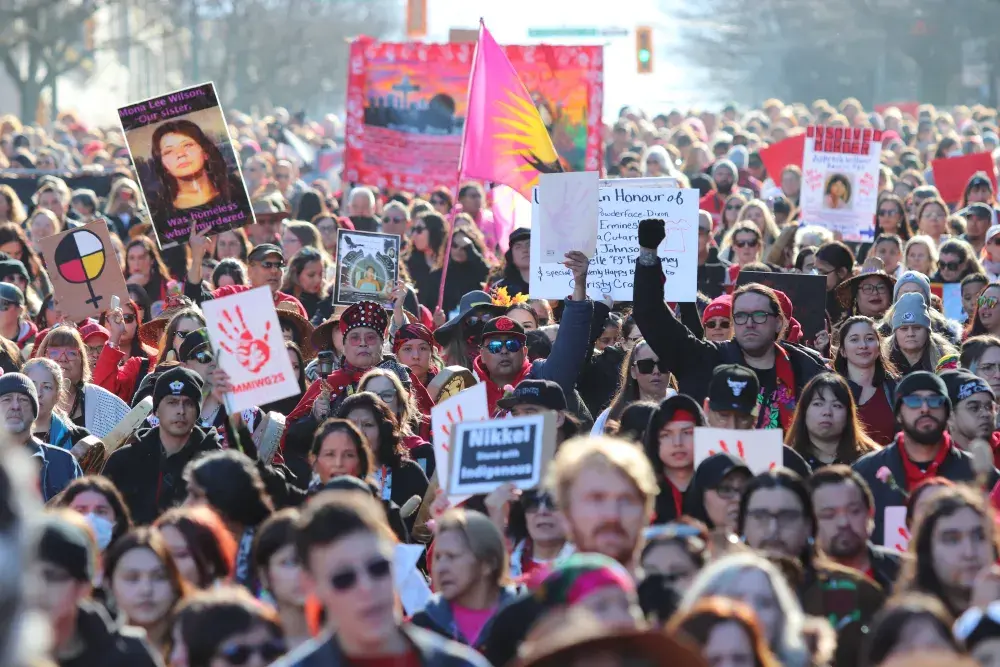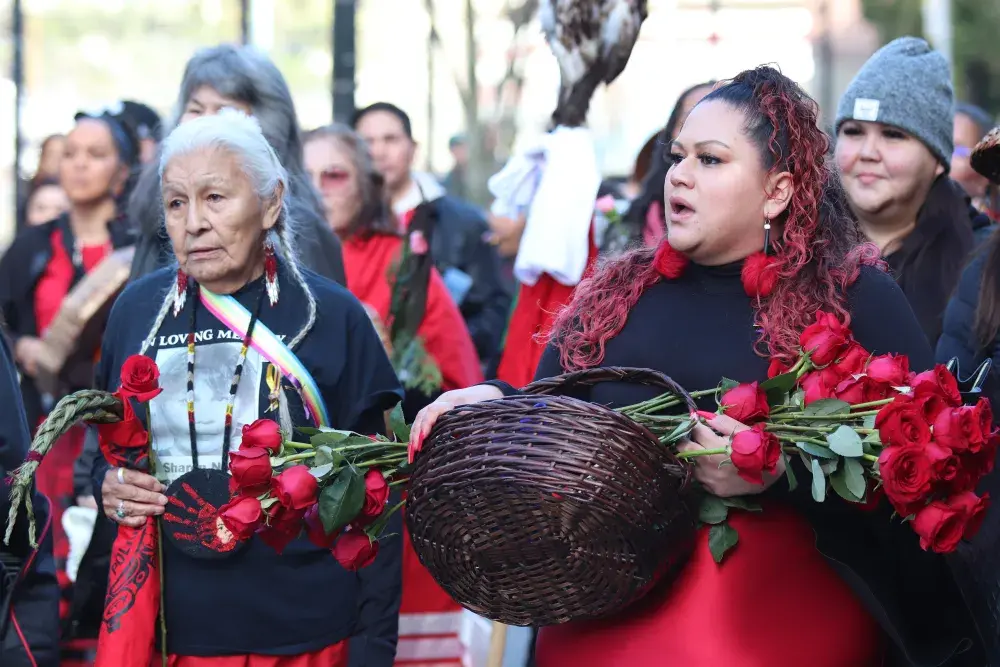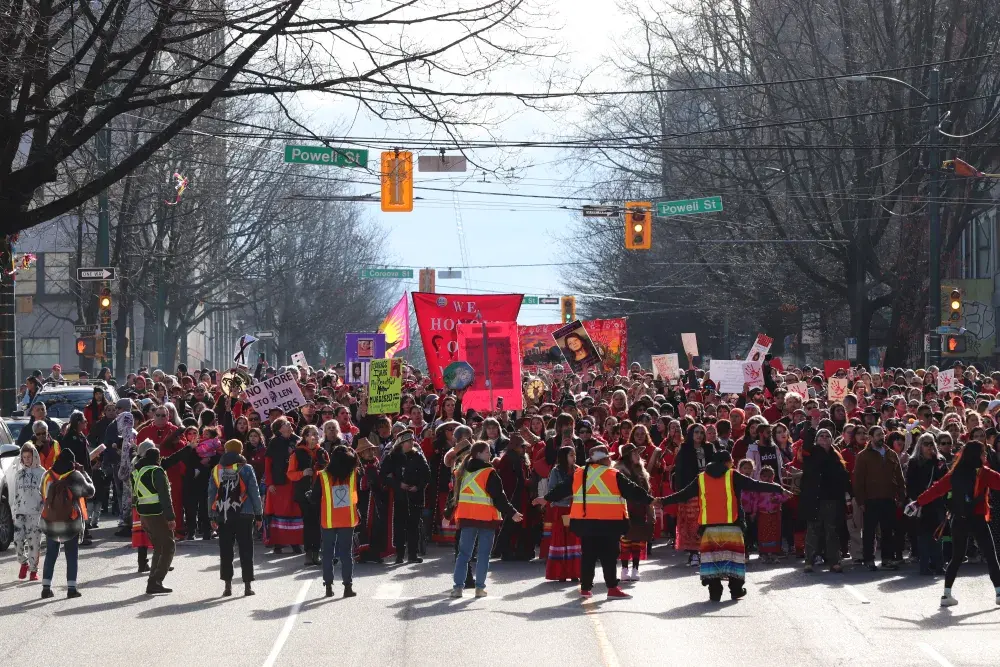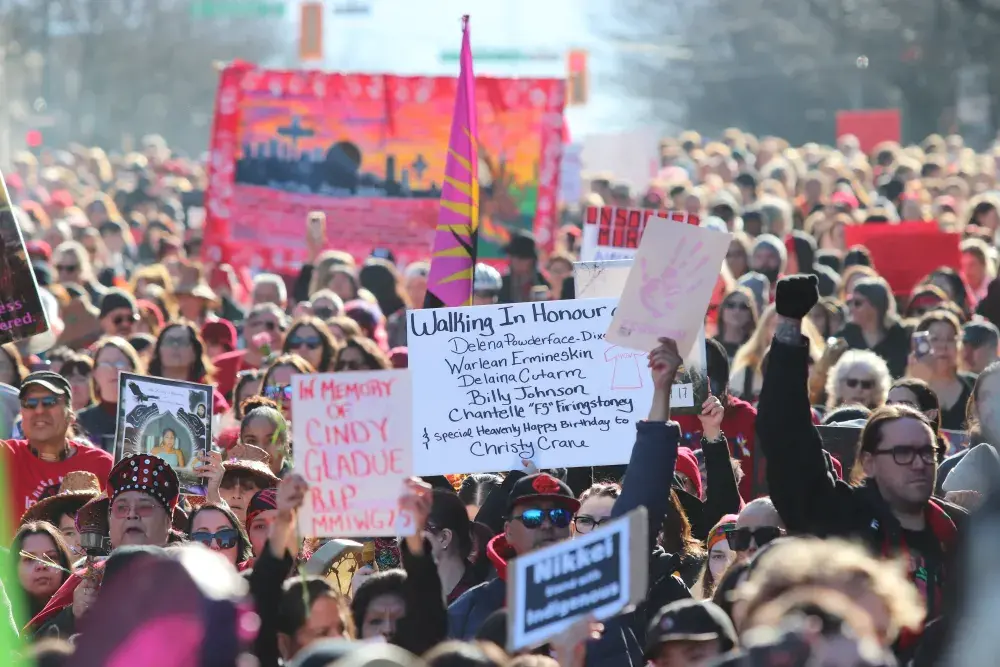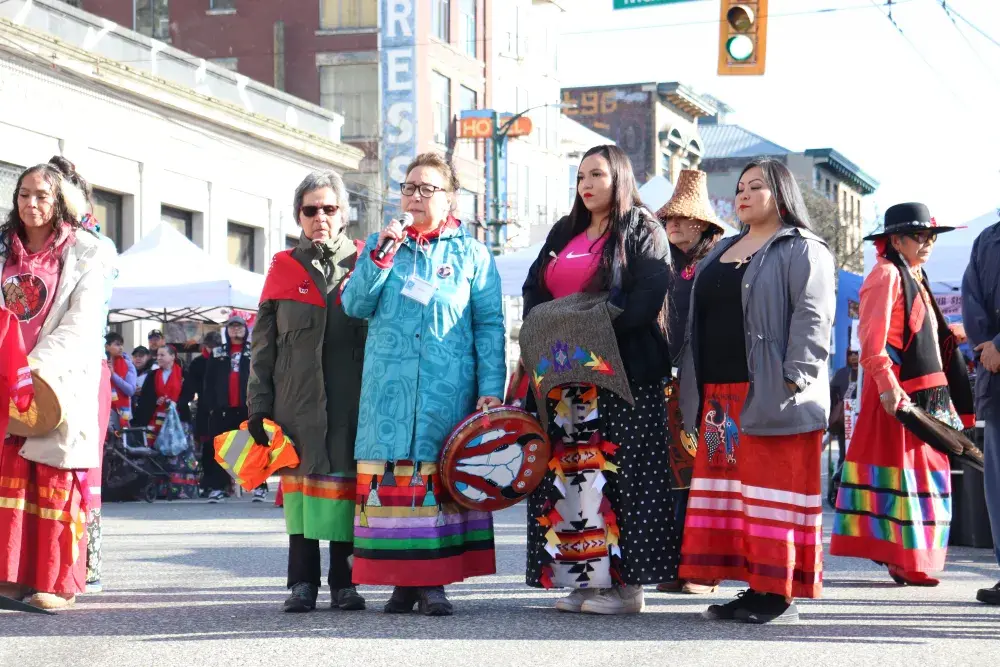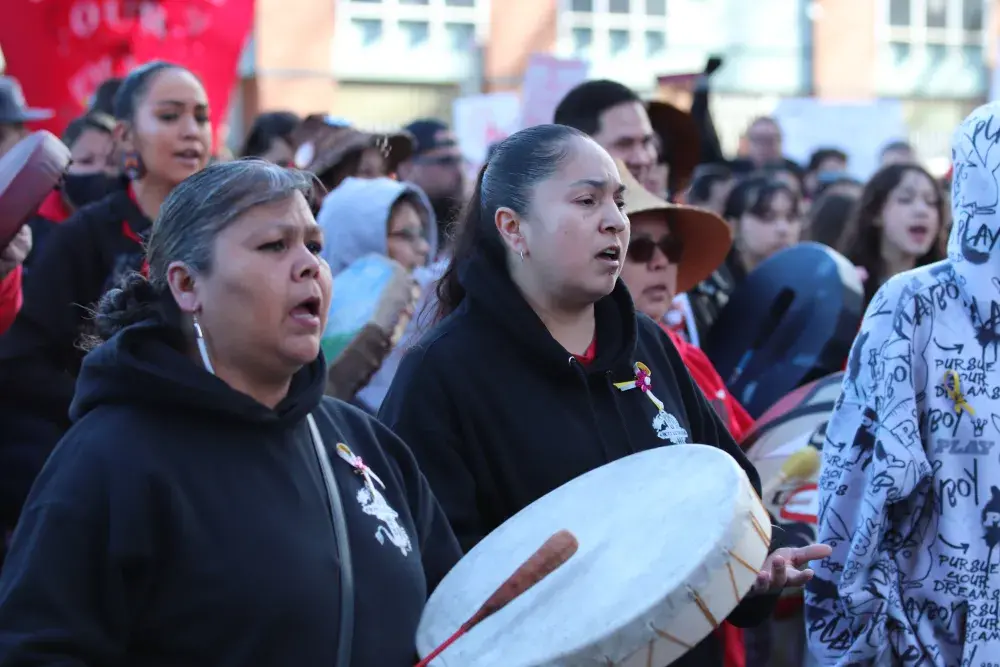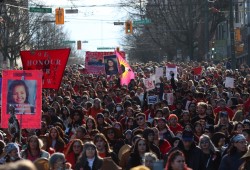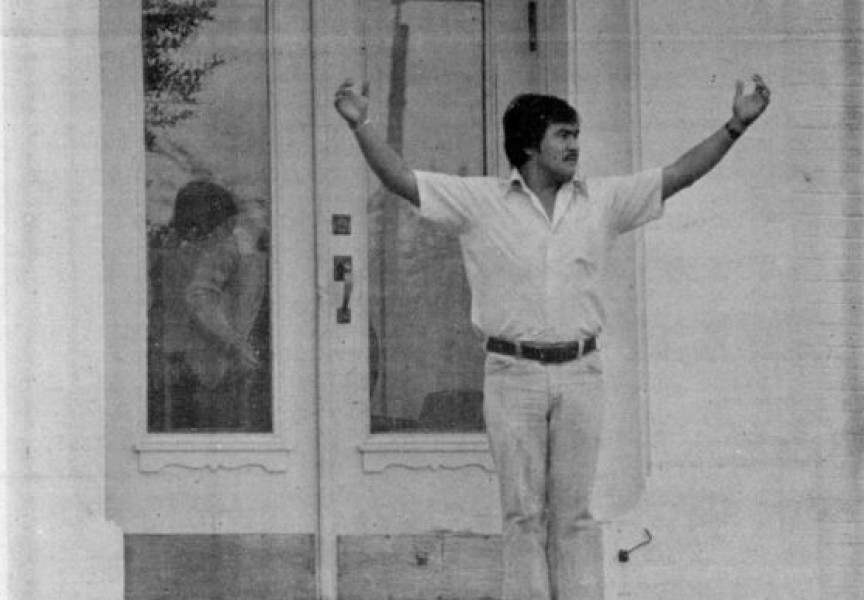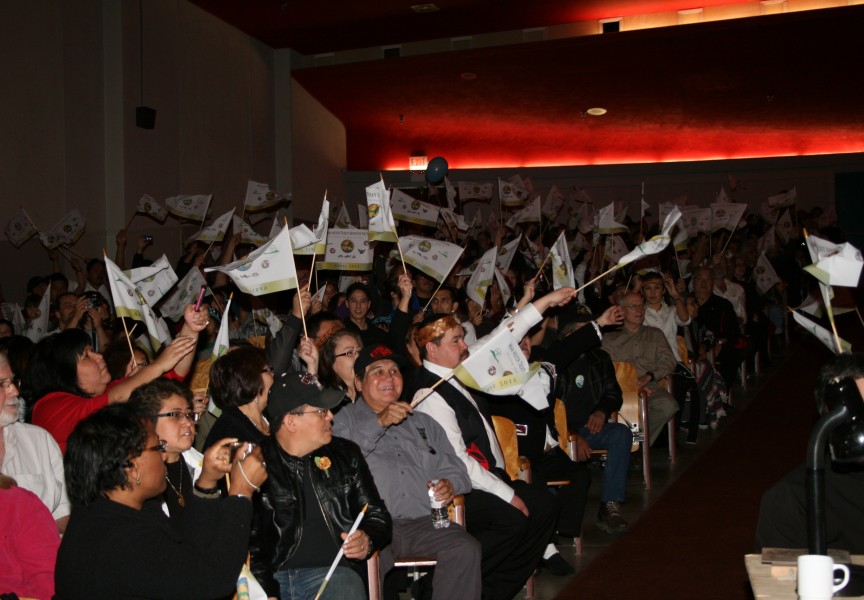For over three decades, Valentine’s Day in the Downtown Eastside (DTES) marks the commemoration of Indigenous women and girls who are missing and murdered. But women and girls have continued to go missing and be murdered, leading family members and advocates say not enough is being done to protect Indigenous people.
Sheridan Martin of Gitxsan Nation attended this year's memorial march with her mother, daughter and granddaughter to honor her sister, Cindy Martin, who went missing in 2018. For five years no one knew what happened to Cindy, but on Aug. 9 of 2023 Cindy’s remains were discovered.
“If you rewind it 20 years ago, Cindy was the one that brought us here,” said Sheridan of the DTES Memorial March, adding that Cindy was involved in advocating for missing and murdered women and girls.
Cindy had lived in Vancouver working as an Indigenous advocate for the school board and teaching Indigenous women and girls from the Downtown Eastside how to drum and sing. But at the time of her murder, she was in her hometown in northern B.C.
“This is important for me, because the murdered and missing Indigenous women started going missing in, probably, 1970,” said Sheridan. “Fast forward to 2024, and it hasn't slowed down.”
According to statistics Canada, 490 Indigenous women and girls were murdered between 2009 and 2021, translating to a rate that is six times higher than non-Indigenous women.
Indigenous women and girls are overrepresented as victims of homicide. During this time period they made up almost three per cent of Canada’s population, Statistics Canada reads, while accounting for between five and seven per cent of victims.
“[I’m] highly aware that my granddaughter can go missing because she's Indigenous,” said Sheradan. “It's about my daughter going missing because she's Indigenous, because she's a woman, because she's a female.”
Karen Williams of Gitxsan was at the march in memory of her sister, Alberta Williams, who went missing in 1989.
“It's very uplifting, very uplifting and positive,” said Williams of the Memorial March. “To come and support one another.”
“Indigenous women are not valued as women in a place where it's our land,” said Williams. “We should be standing together to stop that.”
Carol Martin has worked in the DTES women’s centre and been involved in the Memorial March since it began.
“Women still to this day continue to go missing, nothing has really changed,” said Martin.
“This whole platform is to bring awareness that things haven't changed for us Indigenous women, our sacred givers of life,” said Martin. “They're to be honored, they're to be respected.”
But Martin shared that Canada needs to shift the way Indigenous women are thought of.
“When the media starts talking about these things, the first thing they say is she was a working girl, or she lived a high-risk lifestyle,” said Martin.
“I think at birth, we're at a high-risk,” Martin added, “lifestyle as Indigenous women.”
The Final Report of the National Inquiry into Missing and Murdered Indigenous Women and Girls was published in 2019. Since then, Martin said that there has been very slow progress.
“Where's the response from the government?” she said. “The work is not being put into place to make those changes, and it needs to happen soon.”
For Sheridan Martin, layers of oppression, poverty and systemic racism need to be addressed to stop Indigenous women and girls from going missing.
“How do we start peeling those layers back and really taking a look at how humanity has treated our Indigenous women and girls,” said Sheridan.
“We have to stop them from going missing,” added Sheradin. “How do we put the face of humanity on each Indigenous woman and girl so they’re not looked at as something to be killed and discarded?”
“If we stand in solidarity, we become a louder voice,” she continued. “It's not just one voice or thousands of voice[s]; this [march] is sending out a message across Canada.”
Sheridan hopes that in her granddaughter's life she sees changes and that there no longer Indigenous people going missing and being murdered.
“I see that hope is still surviving, and hoping to find justice for what happened to the women - especially at the Pickton farm,” said Carol, as she explained the yellow roses used in the march represent hope.

